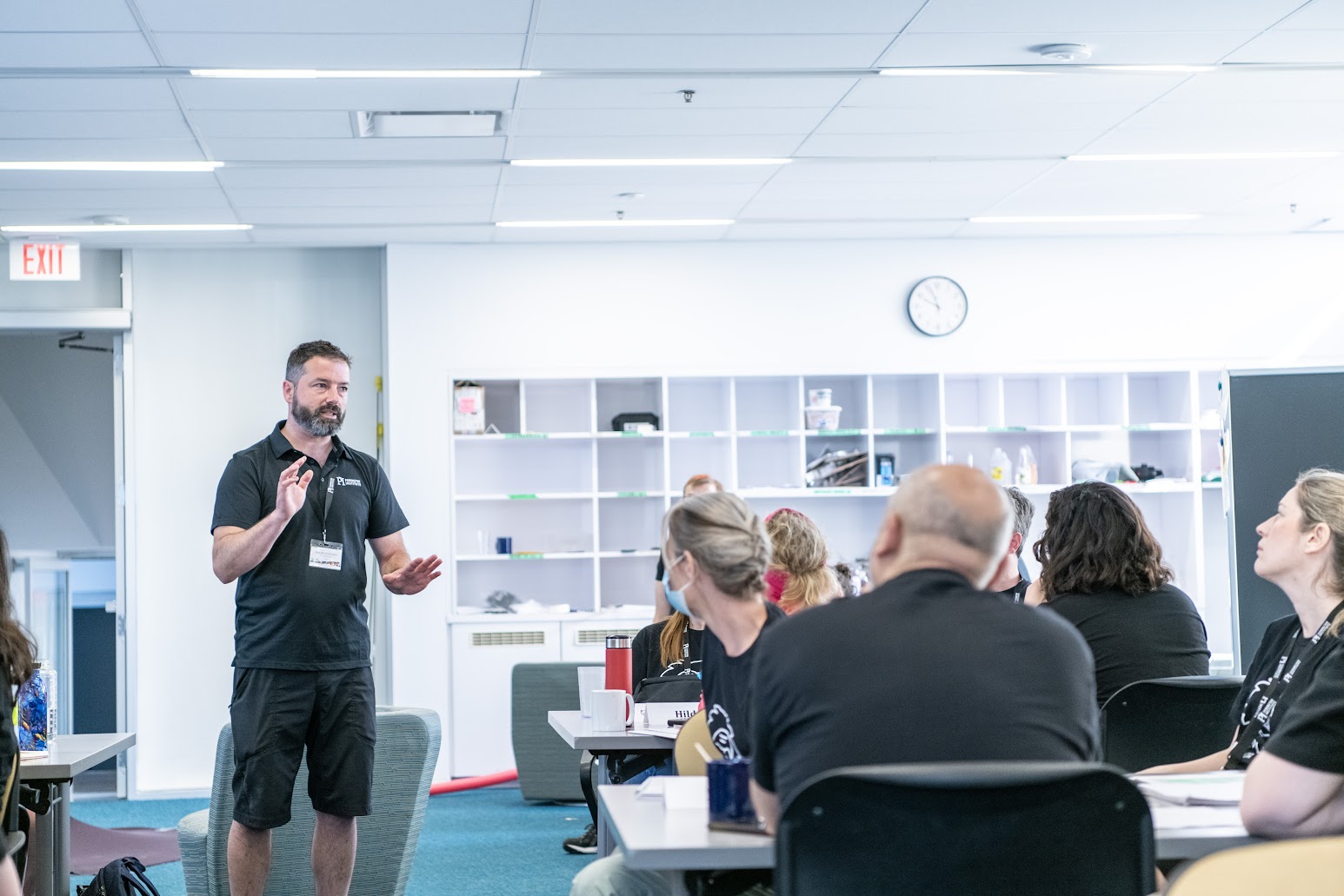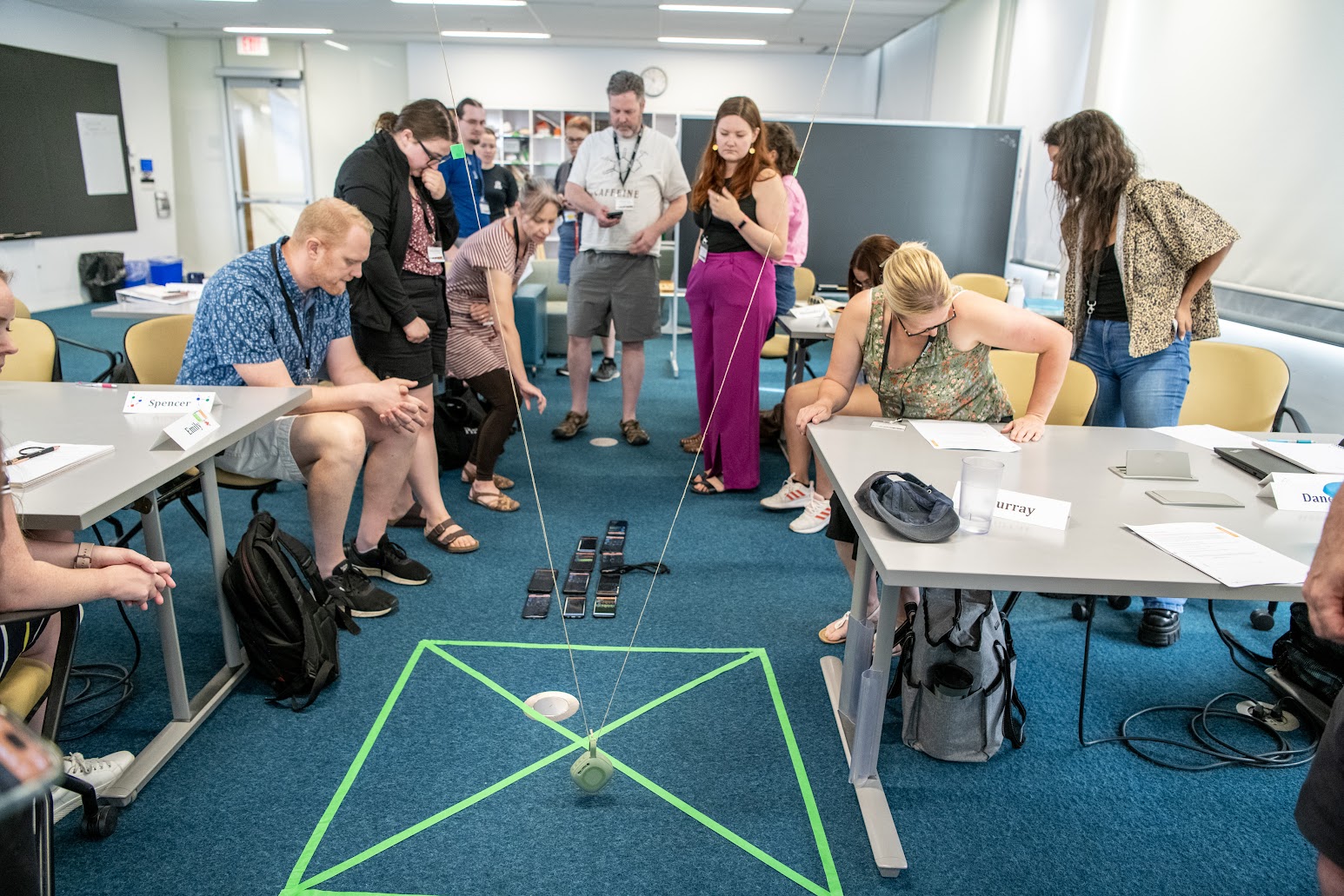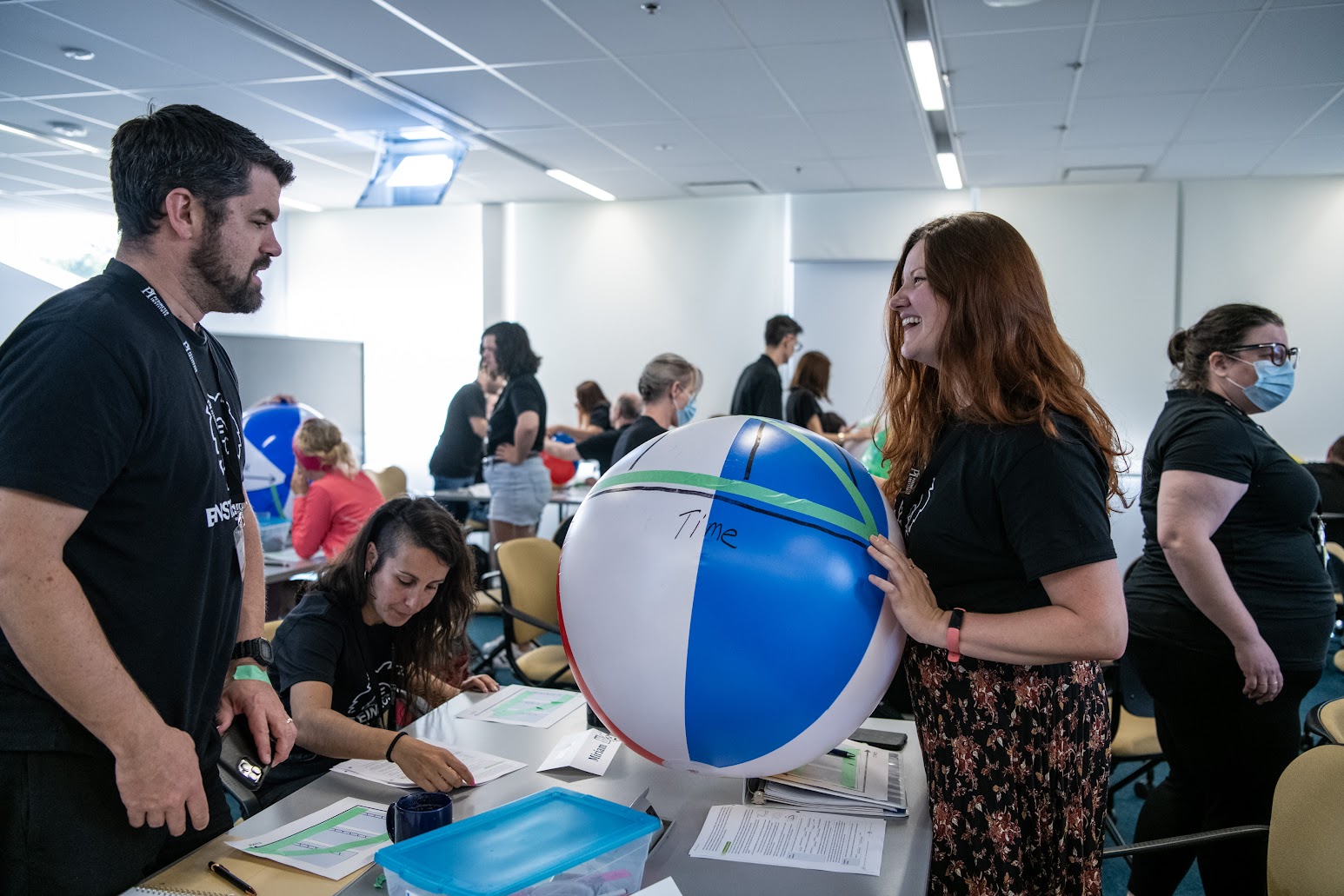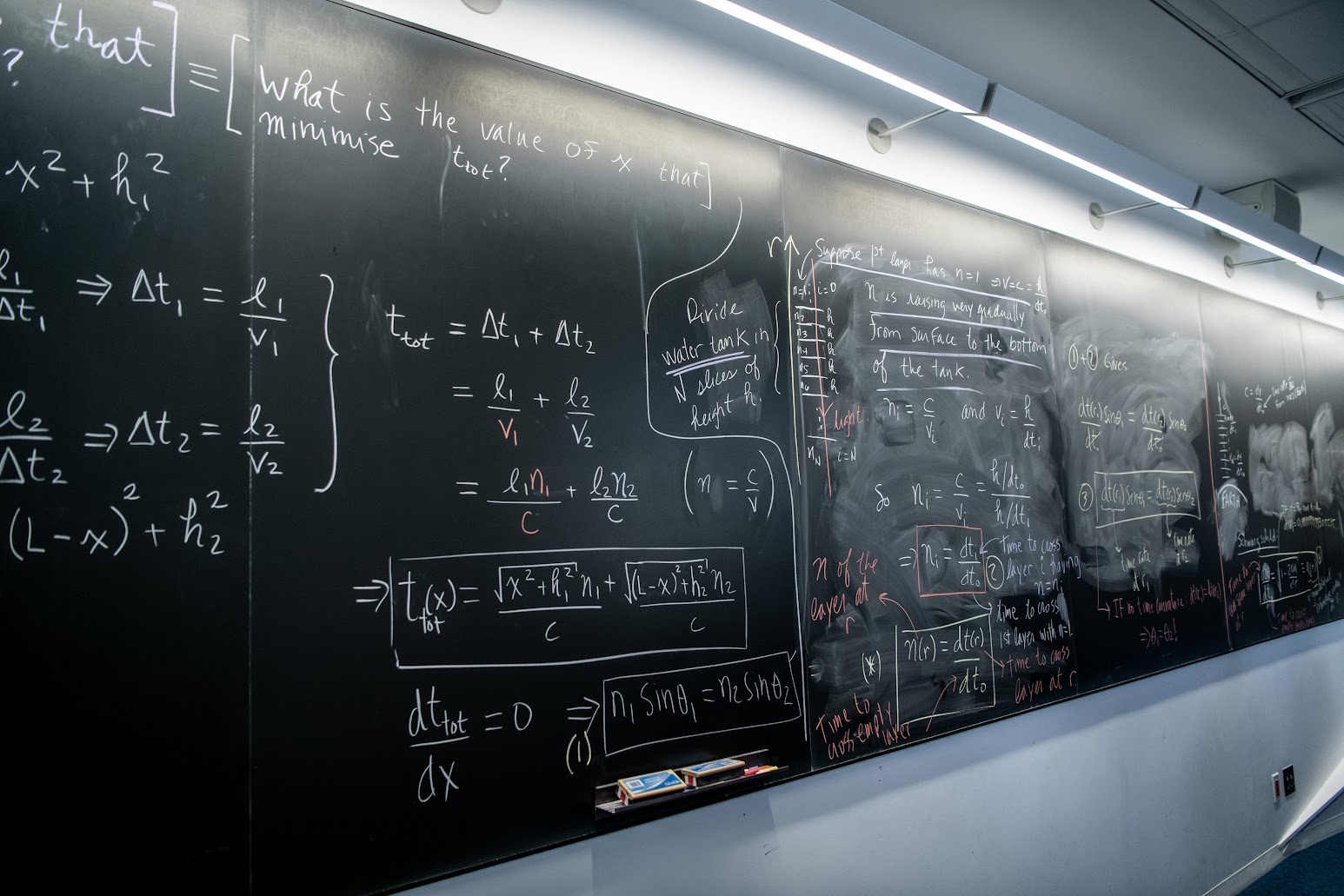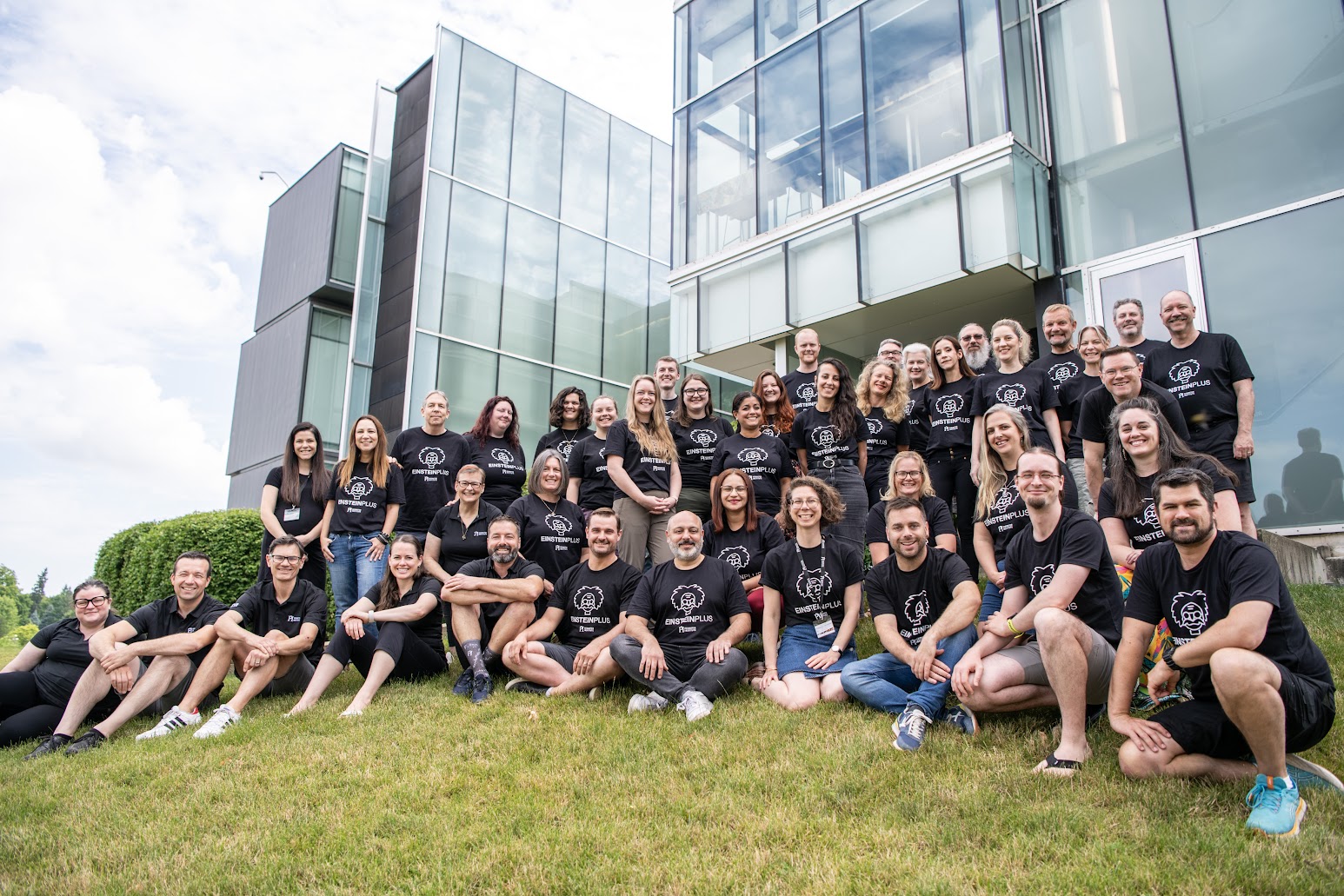Global scientific literacy for a globally connected world.
That is the not-so-modest goal of EinsteinPlus, a week-long professional development event for teachers put on by Perimeter Institute’s Educational Outreach department.
The program aims to train educators around the world, so that they can reach out to young students, wherever they may be, and inspire their interest in science and modern physics.
There were 34 educators at this year’s EinsteinPlus event held in July. They came from across Canada, the United States, Uruguay, Spain, Australia, Turkey, United Kingdom, Denmark, Belgium, Greece, Austria, Mexico, Brazil, New Zealand and South Korea.
Matt Dodds, a physics teacher at Glen Innes High School New South Wales Australia, said he came all the way to Canada for this program so he could bring more “aha moments” to his science classes.
“I have used Perimeter Institute’s resources in the past, and I've explored the posters,” said Dodds, who was at EinsteinPlus for the first time this summer. “I thought, it would be great to come to Canada and learn from the educators who made the resources, and converse with teachers from Canada and around the world about how to better implement them,” he added.
By becoming a better physics teacher, Dodds says he hopes he can bring “aha moments” to more of his students.
It is not just about creating a talent pipeline in physics, Dodds added. He has been teaching physics for 14 years and his former students have gone into a multitude of different professions. But physics will be important to whatever they decide to do. “It’s all about problem-solving and preparing them for the real world,” he adds.
“The skills you learn in physics are adaptable to so many different fields, like medicine, aviation, engineering. Problem solving and thinking about the world on so many different levels is the power of physics.”
There is so much in the news about the latest physics discoveries — whether from the James Webb Space Telescope or the Large Hadron Collider — students are innately interested in the subject, he added.
“They want to learn more, and our job as teachers is to facilitate that and show them the links between what we're learning in the classroom and what's happening in the real world.” EinsteinPlus has been “one of the best programs that I have attended,” in terms of demonstrating the use of available free resources, he added.
Miriam Donaire, a science teacher from Barcelona, Spain, said attending EinsteinPlus was a good way to improve her teaching skills. She is hoping her students will gain confidence in solving problems. “They learn that you can reach any goal if they put their minds and their efforts into it.”
Danelix Cordero, a physics teacher in Puerto Rico, was especially interested in the strategies that will help her convey the concepts of particle and quantum physics.
The best part of EinsteinPlus was the hands-on activities, Cordero added. The activities “take difficult subjects that are hard to understand and make them easy to understand so that we can share that with our students.”
While teaching and inspiring students in the subject of physics is important preparation for the next generation of scientists, it is also important to society, Cordero added. “Physics helps to explain the universe and life,” she said.
Teachers from across Canada were also at the professional development workshop.
Emily Frost, a teacher at St. John’s School in Vancouver, said her background has been in teaching chemistry and physics, but she has recently also started teaching physics at the senior high school grade levels. She came to EinsteinPlus for the first time to learn how to “make the theories more tangible for my students.”
The most valuable aspect of EinsteinPlus involved gaining new ideas for hands-on teaching activities that will make physics learning more memorable, Frost added. “Rather than just memorizing a fact or a piece of information, they will have those experiential moments, and they will be able to relate back to that.”
Good physics teaching is important because it “it explains the world around us,” she said.
Even though there are typically only 30 to 40 teachers in an EinsteinPlus professional development event each summer, the program has a far-reaching impact because many of the educators belong to the Perimeter Teacher Network, so they in turn put on workshops for other teachers to help them with the strategies and available resources.
Several of the teachers, such as David Thrasher from Auckland, New Zealand, said they plan to take what they learned from this year’s Einstein Plus back to the teachers in their home countries. “I am a link in the chain,” Thrasher said.
When teaching modern physics and science, the teachers are often dealing with what is invisible to the naked eye, such as subatomic particles. That means they must get innovative about how they can bring those lessons to their young students, he said.
EinsteinPlus and Perimeter’s resources are “more tools in the basket,” he said.
Teachers interested in next year’s EinsteinPlus can keep tabs on this page, or sign up for our bulletins.
About PI
Perimeter Institute is the world’s largest research hub devoted to theoretical physics. The independent Institute was founded in 1999 to foster breakthroughs in the fundamental understanding of our universe, from the smallest particles to the entire cosmos. Research at Perimeter is motivated by the understanding that fundamental science advances human knowledge and catalyzes innovation, and that today’s theoretical physics is tomorrow’s technology. Located in the Region of Waterloo, the not-for-profit Institute is a unique public-private endeavour, including the Governments of Ontario and Canada, that enables cutting-edge research, trains the next generation of scientific pioneers, and shares the power of physics through award-winning educational outreach and public engagement.

